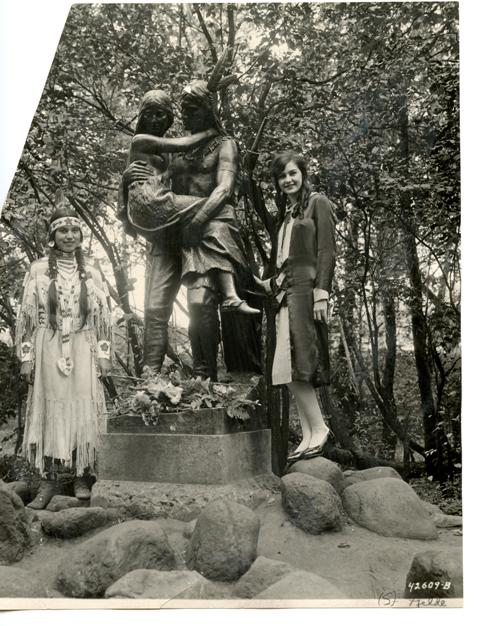
I found this photo in the newspaper morgue in the Minneapolis collection at the Hennepin County Central library. Dated October 6, 1927, it shows two girls–one dressed like a fictional “Indian maiden”–posing by Jakob Fjelde’s Hiawatha and Minnehaha statue at Minnehaha Park. It’s impossible to know the reason this photo was taken. Yet it illuminates a larger story, the nation’s obsession with the “cult” of Hiawatha that grew out of Henry Longfellow’s 1855 poem. This epic verse was a literary sensation that popularized a fictional Indian–a spiritual and peace-loving aborigine who had little in common with the real Native Americans the nation was determined to exterminate in the same period. Longfellow’s Indians came to epitomize American virtues at a moment many feared the nation was threatened by unrestricted immigration. With its high proportion of foreign born residents, Minneapolis claimed the verse as its own, even though it was set “on the shores of Gitchee Gumee.” The urban landscape was reshaped by the poem’s iconography. Minnehaha Park was christened in 1889; Lake Amelia became Lake Nokomis in 1910; Rice Lake was reborn as Lake Hiawatha in 1925. Created in 1893, the statue pictured here was placed on this spot above Minnehaha Falls in 1912.